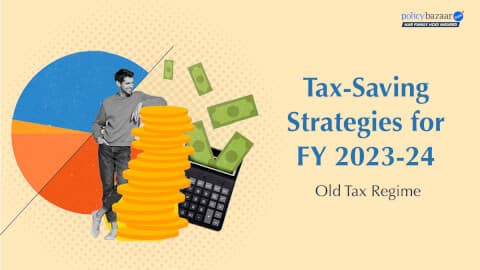1
Feeling Inadequately Insured? 3 Ways To Extend Your Health Insurance CoverSpecial Story
Cue from budget 2023: Financial literacy for youth a top priority
Let’s take a minute for a quick reality check. How many of you were taught the art of managing money, and how many of you had to learn it yourselves? Chances are, you’ll choose the latter.
The FM minister Nirmala Sitharaman, during her budget 2023 speech, announced that a National Digital Library will be set up for kids and adolescents - to promote financial literacy amongst the youth. She emphasized the importance of financial literacy by urging financial sector regulators and organizations to provide age-appropriate resources and reading materials that will foster this critical skill.
Sadly, only 27 percent of the country's citizens are financially educated, according to a recent SEBI survey. This disparity highlights the pressing need for financial education nationwide. But what exactly is financial literacy?
Budgeting. Tax rebates. Debt. Equity. The jargon surrounding financial literacy is enough to make your head hurt. So, we are here to make things a little easier for you. Read ahead.
The basics
Imagine being able to confidently navigate the complexities of credit card interest rates, retirement savings, and investments. It is all possible, thanks to financial literacy. By definition, financial literacy is the knowledge of various financial concepts and skills necessary to make informed decisions regarding personal finances.
And unlike what most people believe, it is not just for investment bankers or financial wizards. It's a valuable skill that every individual should possess, regardless of their income level or profession. From budgeting to saving and investing, financial literacy provides the tools to make wiser money-related decisions.
The dire need of the hour
India ranks the lowest among all the BRICS nations when it comes to financial literacy, according to a survey conducted by the National Center for Financial Education in 2019. Despite parents' best efforts to impart financial wisdom to their children, such as opening a bank account or gifting them piggy banks, the education system in India has thus far failed to introduce financial literacy to the curriculum. As a result, the nation's youth remains ill-prepared for the financial realities of adulthood.
In today's rapidly changing digital landscape, marked by the rise of fintechs and insurtechs, the need for financial literacy has never been more urgent. To ensure that the country's youth is well-equipped for the future, we must impart this essential skill to them at the earliest stage possible.
Take action, now
Gen Zs and Millennials, brush aside your hesitation towards insurance and buy one right away. Life is uncertain and you never know when you might need one. Moreover, buying an insurance policy early on would help you get a lower premium, wider coverage, and a higher sum insured in your later years. And now, there are plans in the market that offer benefits of both investment and insurance. If you’re new to the world of personal finance, these tips will help you get started with your financial journey.
- If you have a low appetite for risk, a guaranteed return plan may be the ideal investment choice for you. These plans offer attractive returns of 7.2-7.5% and come with tax benefits. You can take advantage of deductions under Section 80C of the Income Tax Act, and even the maturity amount remains tax-free.
- For those dreaming of early retirement and globetrotting adventures, opt for an annuity plan. These plans provide a secure stream of income over a specified period, typically in retirement. Many insurance providers offer customizable options, allowing individuals to choose between fixed payments or market-linked plans, depending on their preferred level of risk. In the unfortunate event of the policyholder's death, the annuity plan also functions as a term plan, providing a lump sum payment to the spouse.
- For those seeking the best of both worlds, Unit-Linked Insurance Plans (ULIPs) offer a combination of insurance and investment. In favorable market conditions, returns can range from 12-15%, allowing investors to capitalize on their investments. ULIPs allow a customized investment portfolio, where individuals can divide their investments in equity and debt according to their comfort level.









